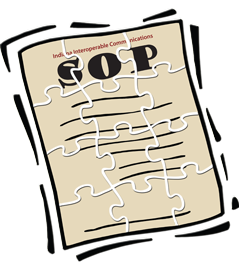Writing Effective SOPs for Pharma
July 1st, 2013 // 1:07 pm @ jmpickett
This is Part II of our article on ensuring effective SOPs in the pharmaceutical industry.
A strong SOP program has a solid technology platform that works well with current technologies and can handle the following functions:
- SOP distribution
- Validation
- Testing
- Recording keeping in formats ready for audit
SOPs have to be revised when there is a process change, regulatory change or a replacement of equipment, so any SOP platform should be able to handle quick updates and distribution. Also, the system should allow you to target an SOP to a specific set of employees. This will prevent your employees from being overwhelmed with SOPs that are not related to their jobs.
FDA mandates that you have to write your SOPs in some type of written format. While this may seem really obvious, there are many violations of that very basic standard – many 483s and warning letters are handed out by the agency for simple SOP failures. Some of the most common 483 violations for SOPs that we see include:
- Failing to establish and follow SOPs that will prevent microbial contamination of drug products that are supposed to be sterile.
- Failing to establish SOPs related to the operations of the quality unit.
- Failing to establish SOPs for the evaluation of quality standards for every drug product, to determine need for any changes in the specifications of control procedures and manufacturing.
- Failing to write SOPs to handle receipt, evaluation and reporting of adverse drug events.
SOPs can vary across companies and sometimes even from plant to plant in one firm, but they should all have a format that is consistent that is a reflection of current FDA regulatory mandates, and also should include key ‘how to’ information for every job task.
Obviously, good SOPs have to be written in clear language so that workers can understand them, but they often are not. FDA mandates that the writers of the SOPs have to be qualified with the expertise and experience that is needed for the material covered in the SOP. But those authors, even if they have experience and skill, often do not have the writing or instructional design skills to communicate properly with workers with a variety of learning levels. Many multinational companies also need to present the SOP information in several languages.
The good news for us is that modern technology gives us better options than the giant SOP manual that some of us may remember from the 70s and 80s. With Internet technologies, SOPs can now be made that have graphics, sound, animation and simulation to show employees how to do procedures and processes properly. Using these types of instructional techniques well can really engage your employees and make them have a better understanding of the SOP material.
Keep in mind that if your company is effective at getting SOPs written, distributed and validated that the employees received them, you still need to be sure that the SOPs were understood. A common 483 citation is failing to follow SOPs. So it is common that employees often do not understand the SOPs, or are not able to apply the knowledge in the SOP to do their job.
So, all SOP programs should have testing and evaluation that will clearly indicate the level of the employee’s understanding of that SOP. For example, online testing provides managers with access to such information, and offers a timely response to any knowledge gaps that were identified. Good testing documentation also assures the FDA of your commitment to employee education, and not just distributing documents.
For more information on writing FDA compliant SOPs, please review our upcoming webinar.



